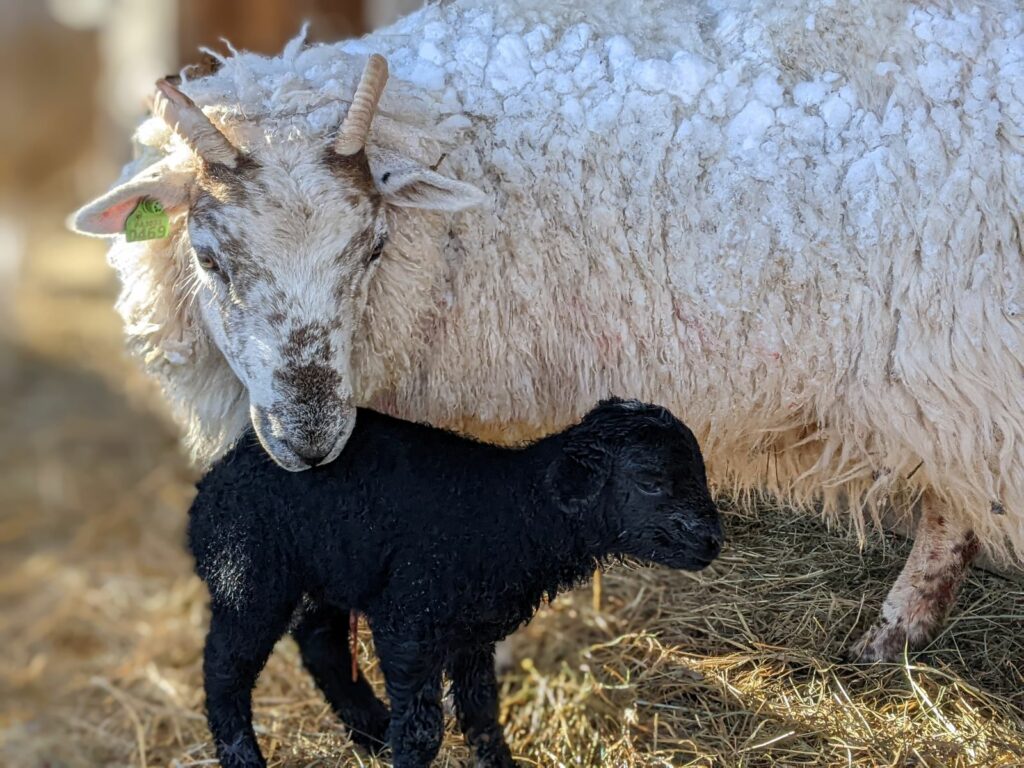The risks and rewards of buying in foster ewes
31st March 2023
As lambing season hits full swing, farmers are likely to encounter problems such as mismothering, ewes rejecting lambs, or triplet and quadruplet births that can leave lambs without an udder

As lambing season hits full swing, farmers are likely to encounter problems such as mismothering, ewes rejecting lambs, or triplet and quadruplet births that can leave lambs without an udder to feed on.
While orphaned lambs can be bottle-fed and nurtured by humans, having a foster ewe take care of the lamb can save farmers time and make use of an animal that has temporarily become unproductive.
In lack of a suitable ewe on the farm, farmers have the option of buying in foster ewes that orphaned lambs can be mothered onto. However, bringing in new stock at a time when the majority of the flock is housed indoors runs various health risks that require careful management.
Therefore, incoming foster ewes and orphaned lambs must be separated from the rest of the flock until it is ascertained the new arrivals pose no threat to livestock already on the farm. Best practice is to keep the ewes in a separate shed or a safe distance away from resident sheep.
To avoid introducing unwanted health risks to the farm, it’s imperative that bought-in ewes are clear of infectious diseases such as mastitis or metritis that can be passed onto healthy animals and must also be dewormed if necessary before joining the flock.
The same precautions apply when buying in pet lambs, which have either lost their mother at birth or had to be taken away for some reason. Farmers may look to bring in pet lambs to foster onto a ewe that has lost its lambs.
Pet lambs may present signs of scour, scabby mouth, excess salivation, watery eye or an infected navel and should be kept away from newly born lambs to prevent the spread of infectious diseases.
Whether farmers are in need of a foster ewe or a pet lamb, the animals should be bought in from a known or reputable source to minimise the chances of any health issues in the first place.
Tips for forming successful foster ewe-lamb attachments
Achieving a strong bond between foster ewes and lambs will be vital when the time comes for the pair to join the flock on pasture. There are several reasons why a lamb might need a foster mother, such as:
- When ewes die during or after lambing
- When lambs have to compete with larger siblings to feed
- When lambs are mismothered by ewes (common with maiden ewes)
Before starting the fostering process, it’s important to ensure the foster ewe is up for the job. Key aspects to consider are the ewe’s milk production and the number of working teats, as well as the physical condition of the animal.
There are a number of tried and tested methods for facilitating the fostering process and trick the ewe into accepting the lamb as one of its own. If the lamb is introduced immediately after birth, the most common method is to smother it with the foster mother’s foetal fluid to replace the lamb’s natural scent with that of the foster ewe.
If the lamb is a few days old and can walk, it’s worth tying three of its legs together before covering it with afterbirth and presenting it to the ewe. This will help convince the ewe the lamb has just been born and is one of her own, making for a smoother transition.
A less elegant method for mothering an orphan lamb is skinning the foster ewe’s dead lamb and securing it as a ‘jumper’ onto the lamb to be adopted. This technique can be very effective, provided the tail is left on the skin and it covers the anus of the orphan lamb.
A few days of wearing the skin is usually enough to convince the ewe to accept the lamb. The smell of the skin will also help mask the smell of the foster lamb’s biological mother, further aiding the process.
If the ewe continues to attack the foster lamb despite all efforts, there are tools for restricting the ewe’s head so she cannot inflict further damage.
An example is using stocks to prevent the ewe from turning around and kicking or butting the lamb when it tries to feed. Another solution is tying the head up with a halter with just enough slack to allow the ewe to feed, drink and lie down normally.
Ultimately, knowing how to effectively mother lambs is an important part of stock management and can help optimize flock performance. Ensuring orphan lambs can access an adequate and regular milk supply from foster ewes will result in greater finishing weight and better prices when slaughtered.


